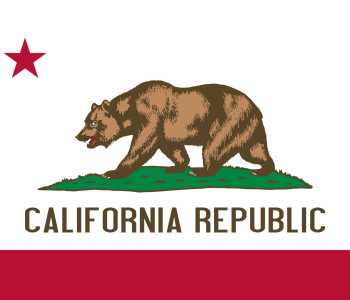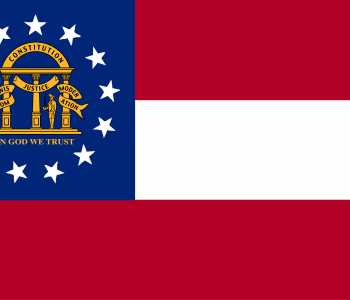How to Trademark a Name

How To Trademark a Name
A trademark is a way for a brand to stand out from the competition. It protects the business name from any branding disputes or lawsuits. Registering a trademark is straightforward and can take less than 90 minutes.
The simplest method to apply for a trademark is by registering online. Use the United States Patent and Trademark Office Website (uspto.gov).
U.S. trademark applicants do not need a U.S.-licensed attorney, but it is still a legal process. Although brand name\ registration is often a simple process, complications can arise. Make sure the business meets legal requirements with a trademark attorney.
What is a Trademark?
A trademark is a type of intellectual property.
Trademarks are recognizable slogans, designs, or a combination of these identifying markers.
Each piece distinguishes the source of a company's goods and services from another. The signs and symbols make a trademark.
What is the purpose of a trademark?
The purpose of a trademark is to ensure two companies do not operate under the same name, design, or symbol. Trademarking separates brands from their competitors and prevents customer confusion.
How to trademark a brand name and logo?
1. Choose a unique brand name and logo
A brand's trade name does not need to be fancy, but it has to be unique. To find a descriptive and distinct trademark for the business name is not as easy as it sounds. It can be a long and tedious process, but online sites can help select a unique name.
2. Conduct an online trademark search
Simple words that describe business products and services are not usable. The name's uniqueness is crucial. A unique trade name helps to prevent missing legal obligations or trademark infringements.
Before applying, the register should search online trademark tools:
MyUSPTO (the United States Patent and Trademark Office)
MyUSPTO is a free account a person can make on the USPTO website. The page is customizable and secure. The location helps with managing the business intellectual property portfolio.
Trademark Electronic Search System database (TESS)
Search the Trademark Electronic Search System (TESS). TESS comprises all active and inactive trademark registrations and application records. Applicants can check if applied trademarks will cause conflict by having similar names. The search helps with deciding whether to register a trademark.
File forms in Trademark Electronic Application System (TEAS)
Submit trademark forms and make payments through TEAS. The Trademark Electronic Application System is where to apply and update correspondence. It is also where businesses can submit registration maintenance, renew documents, and more.
Check status and view documents in Trademark Status and Document Retrieval (TSDR)
The TSDR system gives access to a trademark application or registration file. Parties can use the serial or registration number of the trademark.
ID Manual (Acceptable Identification of Goods and Services Manual)
The ID Manual provides a searchable listing of acceptable IDs of goods or services. The list includes pre-approved descriptions. Use them in the initial application to describe and classify goods or services.
If the information is not accurate, do not use it. Any misidentifying of goods or services can cause application or trademark registration delays.
Trademark Manual of Examining Procedure (TMEP)
An examining attorney must use the guidelines and procedures of the TMEP.
Examining attorneys must follow the manual when inspecting trademark applications. Other lawyers often use it as a resource.
Trademark Official Gazette (TMOG)
The Trademark Official Gazette (TMOG) is a USPTO publication. Published weekly, TMOG includes Principal Register trademarks that received preliminary approval. The publication begins a 30-day opposition period for these trademarks.
Design Search Code Manual
To search TESS for designs that show up in trademarks is through the Design Search Code Manual.
The USPTO assigns trademarks with one or more six-digit numerical codes. The manual lists design categories, divisions, and sections that make up these numbers.
Using these methods helps to ensure that a trading name or company logo is not already in use. Search the United States Patent and Trademark Office or USPTO database.
3. Complete the trademark application and file it
After confirming a trademark is usable, file to register it. It can take up to 12 to 18 months for the approval of a trademark application. The sooner the filing of a trademark occurs, the better. Use the USPTO website to file a brand name registration application.
Make sure the trademark form is complete with:
The applicant's name
The applicant's address
The applicant's type of legal entity
The applicant's citizenship
The name and address of the person or legal representative
A drawing of the mark is necessary only if it has a design element. Otherwise, it is a standard character mark and needs to provide the letters of the word or phrase.
A description of the mark is only necessary if it is not a standard character mark. (i.e., design elements, color, or sound).
A list of goods and services the application covers
The international classes of the goods and services
The dates of the marks and a specimen of first use
A verified statement or declaration.
The required fee depends on the application type and the number of classes. The general range for an electronic filing fee is $250 to $350 for each class of goods or services.
4. Publication of the Trademark
Once the above steps are complete, the publication and number of a trademark will appear in the TMOG. It often takes around one month after trademark approval. Within 30-days of the publishing date, anyone who thinks the mark will harm them can file an objection.
5. Receiving a trademark registration certificate
To get a trademark registration certificate, request the TM-46 file. Get this file from the "Form Filing Tab." Use the application, opposition, or rectification number to get a legal certificate.
If an interested party receives no objection, the protection of the trademark is in place. A Certificate of Registration will have the seal of the Trademark Registry.
The registered trademark name and logo are valid for 10-years. The renewal process is easy but comes with a fee.
Registering a trademark ensures the business maintains exclusive trademark rights. If a lapse in maintenance documents or renewal does not happen, the company loses the rights of the mark.
6. Submit a Statement Of Use
Once a business receives a Notice of Allowance, file a statement of use. The filing must happen within six months, with evidence that shows the mark is already in use. The filing fee is often around $100.
If the statement is due, but no commerce evidence exists of the mark's, filing for an extension is possible. Asking for a 6-month extension up to 5 times, but each extension request will cost $125.
7. Declaration of Continued Use and Trademark renewal
Every sixth year, and tenth year, file a Declaration of Continued Use with a current "specimen" of use. This filing is Section 8 Declarations. Every ten years, also file for a renewal application or a Section 9 application.
Conclusion
A trademark is essential in uniquely separating the company from its competitors. A registered trademark name and logo familiarize customers with the brand.






